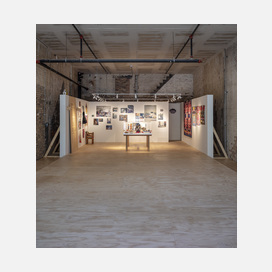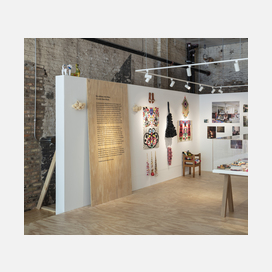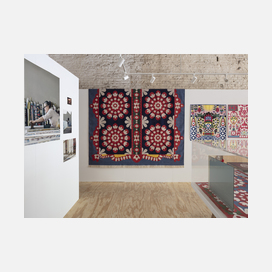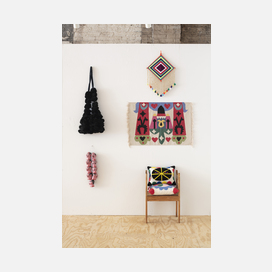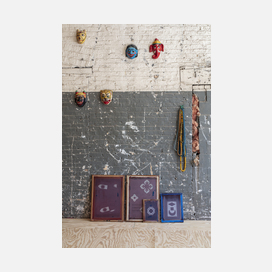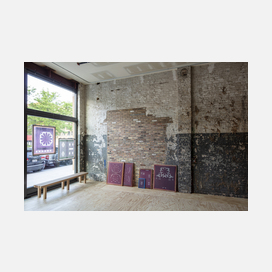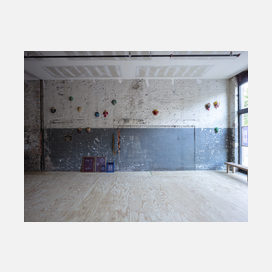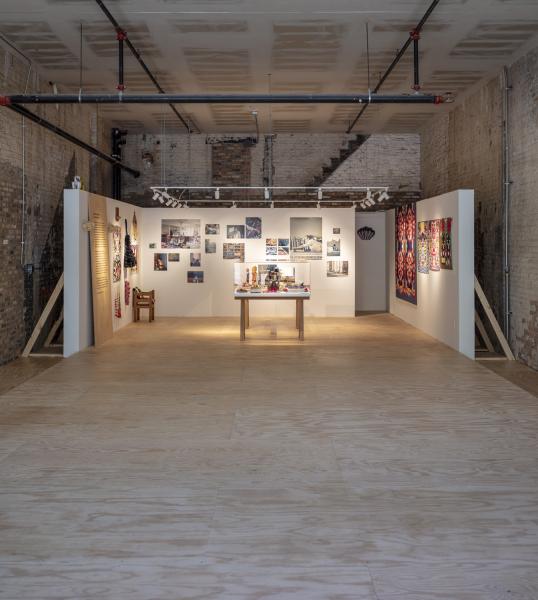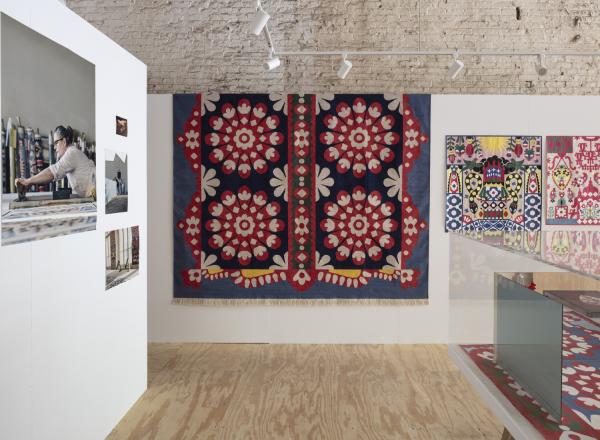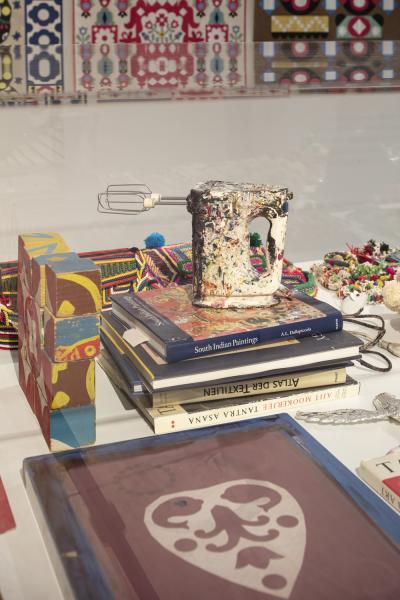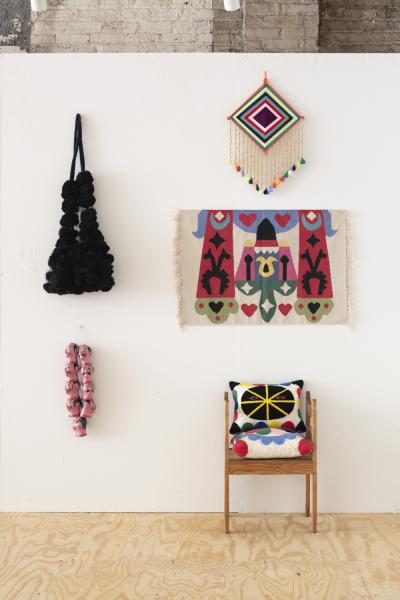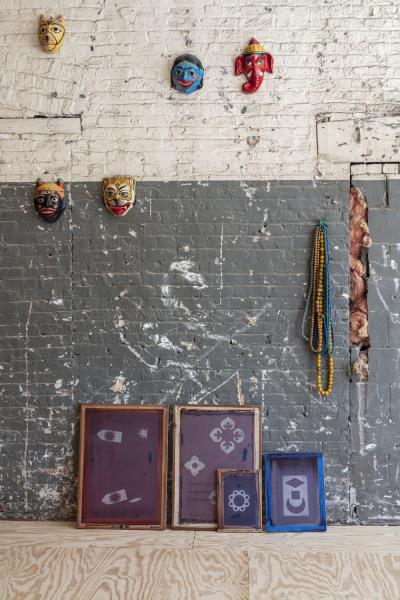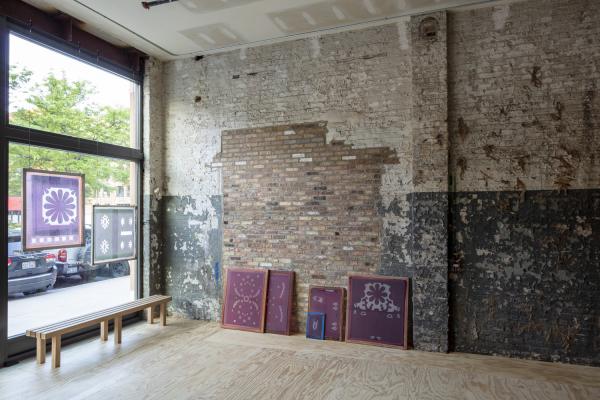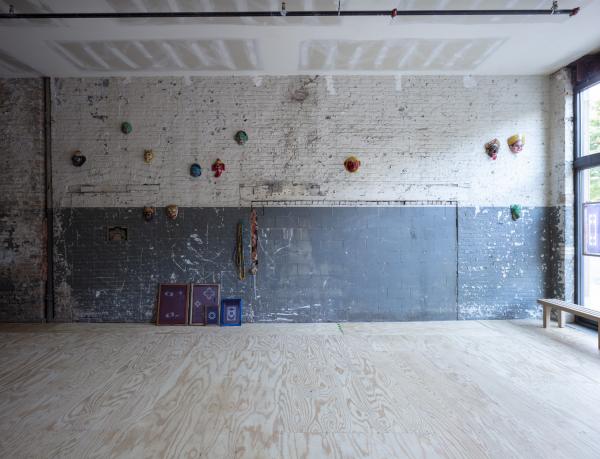To celebrate the recently expanded collaboration with the Zürich-based textile designer Sonnhild Kestler, Maharam will present Ein schönes ödes Haus. (A Lovely Bare House.), a special offsite exhibition highlighting Kestler’s distinct pattern language and reference materials during NeoCon 2019 in Chicago.
Created in close dialogue with Kestler, the exhibition displays a selection of everyday cultural artifacts culled throughout her extensive travels that inform her unique pattern language including figurines, talismans, handmade shoes, textiles, military insignia, games, and masks. Of personal significance to Kestler, each object was carefully transported from her atelier in Zürich to an industrial building in Chicago’s historic Fulton-Randolph Market district—a site with many parallels to her own workspace. The exhibition’s title was chosen by Kestler, who noted an immediate affinity with the building’s raw interior by recalling a line from F. W. Murnau’s 1922 film Nosferatu, “ein schönes ödes Haus,“ or “a lovely bare house.” According to Kestler, this phrase speaks to the beauty she derives from the ordinary and imperfect.
Maharam Media worked in partnership with Gensler to construct an exhibition structure that would minimally interfere with the building’s historic interior—the site of a wholesale produce business for much of the last century. A wide, low-incline ramp begins at the entryway and culminates at the back of the space in an unfinished plywood shell that contains an array of artifacts highlighting Kestler’s unique eye and synthesis. A central narrow vitrine supported by two sawhorses was custom designed in solid white oak without visible hardware to reference the unadorned, industrial pieces found in Kestler’s studio. Two elongated benches of the same ilk offer visitors a broader vantage along the exhibition’s perimeter.
Matte, natural materials and minimal structural intervention provide a humble backdrop to Kestler’s dynamic process—a hands-on approach that distills a range of graphic, folkloric, and traditional references translated into hand-cut paper and silkscreen. Joining Kestler’s collection along the north wall is an installation by London-based photographer Nick Ballón, who explored Kestler’s studio process during two visits to Zürich over the past year. A recent addition to Maharam’s collection of handwoven rugs, Mandala by Sonnhild Kestler, hangs along the east end of the platform to honor a newly escalated collaboration with the Maharam Design Studio while inviting a deeper view into the multifaceted and highly personal process behind each composition. Ein schönes ödes Haus. will be on view at 912 West Randolph Street in Chicago, June 9–13, open 10:00am–6:00pm daily.
About Sonnhild Kestler
Sonnhild Kestler (b. 1963, Germany) is a textile designer and hand-screen printer who graduated from Zürich University of the Arts and now lives and works in Zürich, Switzerland. Her work emphasizes dynamic pattern compositions, vibrant color, and ornate graphics. Along with textiles for interiors, Kestler creates home and fashion accessories under her own label, S.K. Hand-Druck, which is carried by her shop within the Swiss boutique Thema Selection. In 2010 she was awarded the Grand Prix Design Award for lifetime achievement by the Swiss Federal Office of Culture. A Maharam collaborator since 2006, her textiles Folklore, Alpine Stripe, and Painted Stripe are currently held in the permanent collection of the Art Institute of Chicago.
About Nick Ballón
Nick Ballón (b. 1976, United Kingdom) is a documentary and portrait photographer based in London. With a journalistic sensibility at the center of his photographic practice, Ballón’s nuanced approach to storytelling unifies a diverse range of projects through detailed observation and an ability to work in dialogue with his subjects. Given his facility in capturing live environments, Maharam Media has enlisted Ballón in several commissions including documenting the processing of Maharam leather in Northern Italy, the Maharam Design Studio in New York, and most recently, Sonnhild Kestler’s atelier in Zürich. Rather than approaching these with a predetermined outcome, Ballón is invited to adopt a focus of his choosing, often capturing a multilayered sense of place and atmosphere while extracting new insight in the process.
